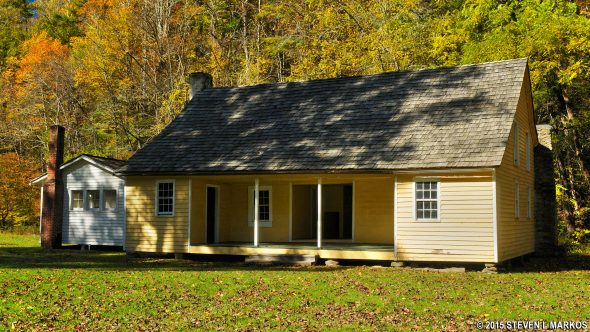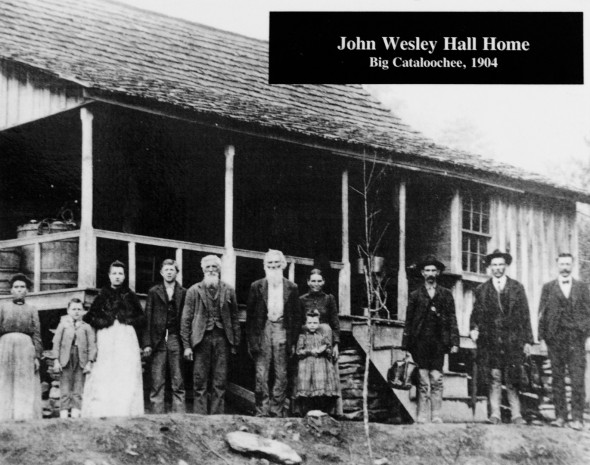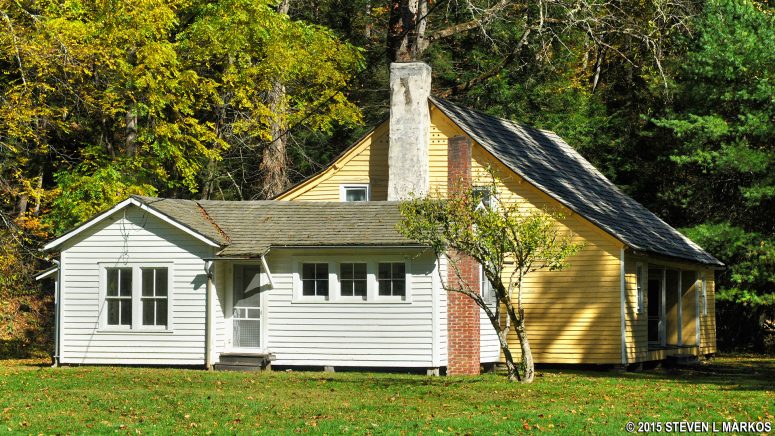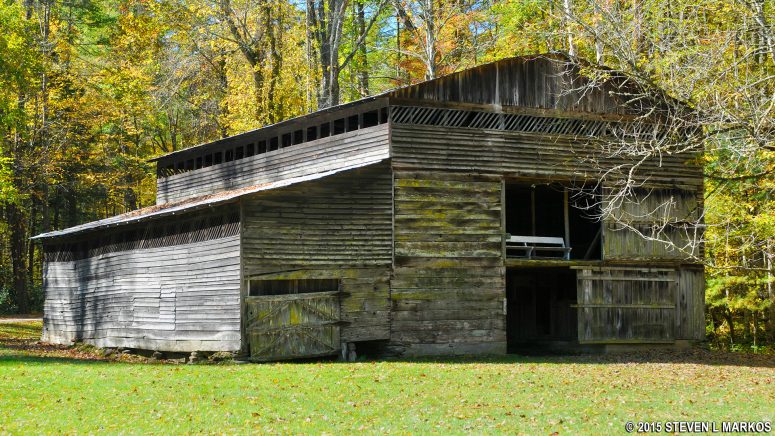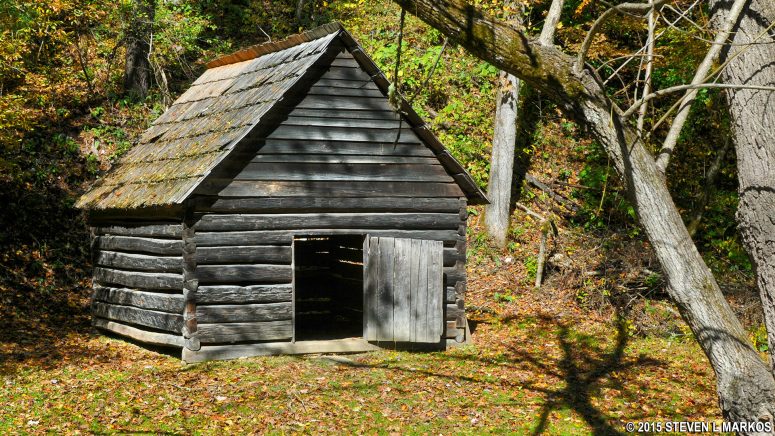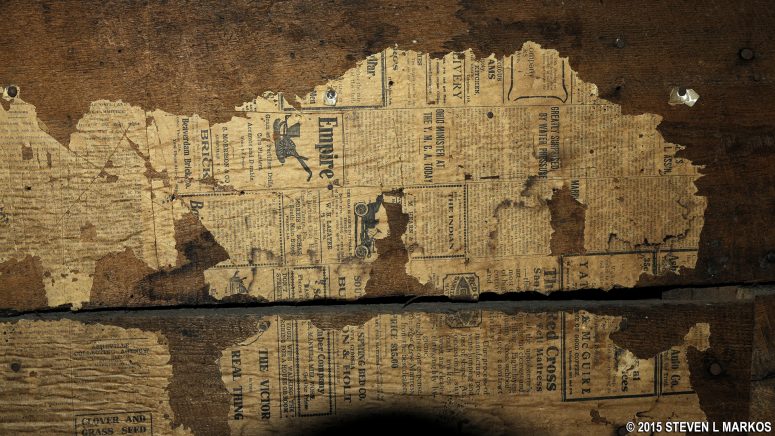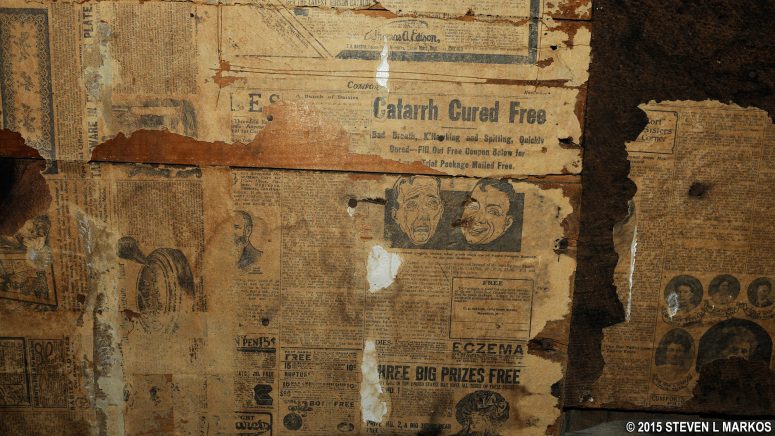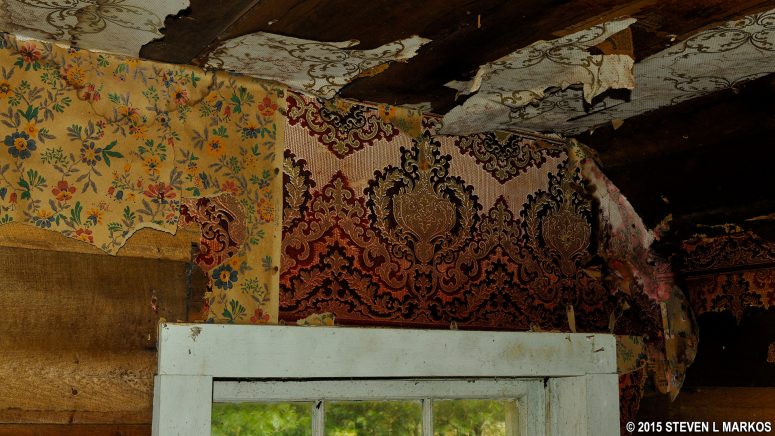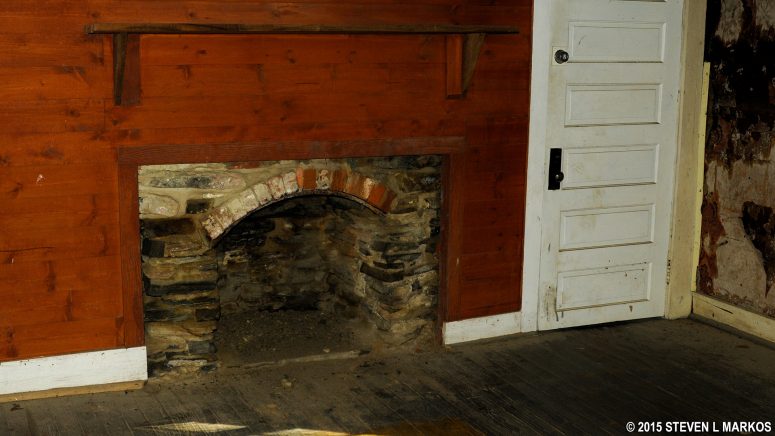The Palmer House is located on a dirt road that forks off of the paved road just before arriving at the Cataloochee Campground. For a location map, see the Cataloochee Historical Area web page here on National Park Planner.
Of all the historical buildings in the Big Cataloochee area, it is the Palmer House that is Great Smoky Mountains National Park’s showcase. The house is open seasonally, and inside is a nostalgic exhibit area full of old photos of the people you will read about as you tour the area, plus information on the other buildings and their restorations. If the TV is working, there is also a documentary on Cataloochee, complete with interviews with old timers who lived in the community before being forced out by the government to create the park.
The Palmer House was built around 1860 by George Lafayette Palmer (aka Uncle Fate), one of the sons of the original Cataloochee Palmers, George Palmer, who moved to the area in 1848 after loosing most of his money gambling. The house is a “dog trot” house, which consists of two log cabins set side by side with an open area between them. A common roof is placed over both structures. The open area, now roofed over, served as a walkway between the two sections, a covered sitting area during warm or stormy weather, and a passageway for air to flow through to help keep the two cabins cool in the summer. The kitchen and dining area were in one cabin, while the living quarters were in the other. One room was eventually used as the post office from the early 1900s until the property was purchased for the inclusion in Great Smoky Mountains National Park.
By the end of the 1800s, log cabins had gone out of style, but instead of tearing them down, most people simply tacked on weather board to the outside and wood paneling to the inside, effectively encasing the original logs between the two walls. Uncle Fate and his son Jarvis made such a renovation between 1900 and 1905. After Uncle Fate died in 1910, Jarvis inherited the property and built a two-room kitchen and dining room wing onto the house (1924). This is now the exhibit area. When viewing the house, the white section on the left hand side is the addition, while the yellow building is the original.
The Palmer barn also remains standing, as do two bunkhouses built by Jarvis to accommodate tourists who came to fish on his land. Inside the barn, you can walk up a ramp to the second level and look out over the property. There is even a ladder you can climb to access the third level.
A walk through the original house is interesting, especially a trip to the upstairs level. The rooms were wallpapered with newspaper, a trick those without a lot of money used to seal the cracks in the walls to keep out the cold air. You will also find newspaper on the walls of the Caldwall House farther down the road, but not preserved to this extent. I spent quite a while reading some of the old stories and looking at the advertisements, though I never could find a date. To keep guests from being distracted by the articles, the paper was usually pasted on upside down or sideways—sideways is the case with most of the wallpaper here.
Jarvis Palmer was not poor, so he was able to afford real wallpaper for the downstairs rooms, and remnants of this paper remain. Even the ceilings were papered over.
Plan to spend about a half hour to explore the house and barn, plus read through the exhibits. There is a restroom and one picnic table at the home.
With a few exceptions, use of any photograph on the National Park Planner website requires a paid Royalty Free Editorial Use License or Commercial Use License. See the Photo Usage page for details.
Last updated on March 16, 2020

